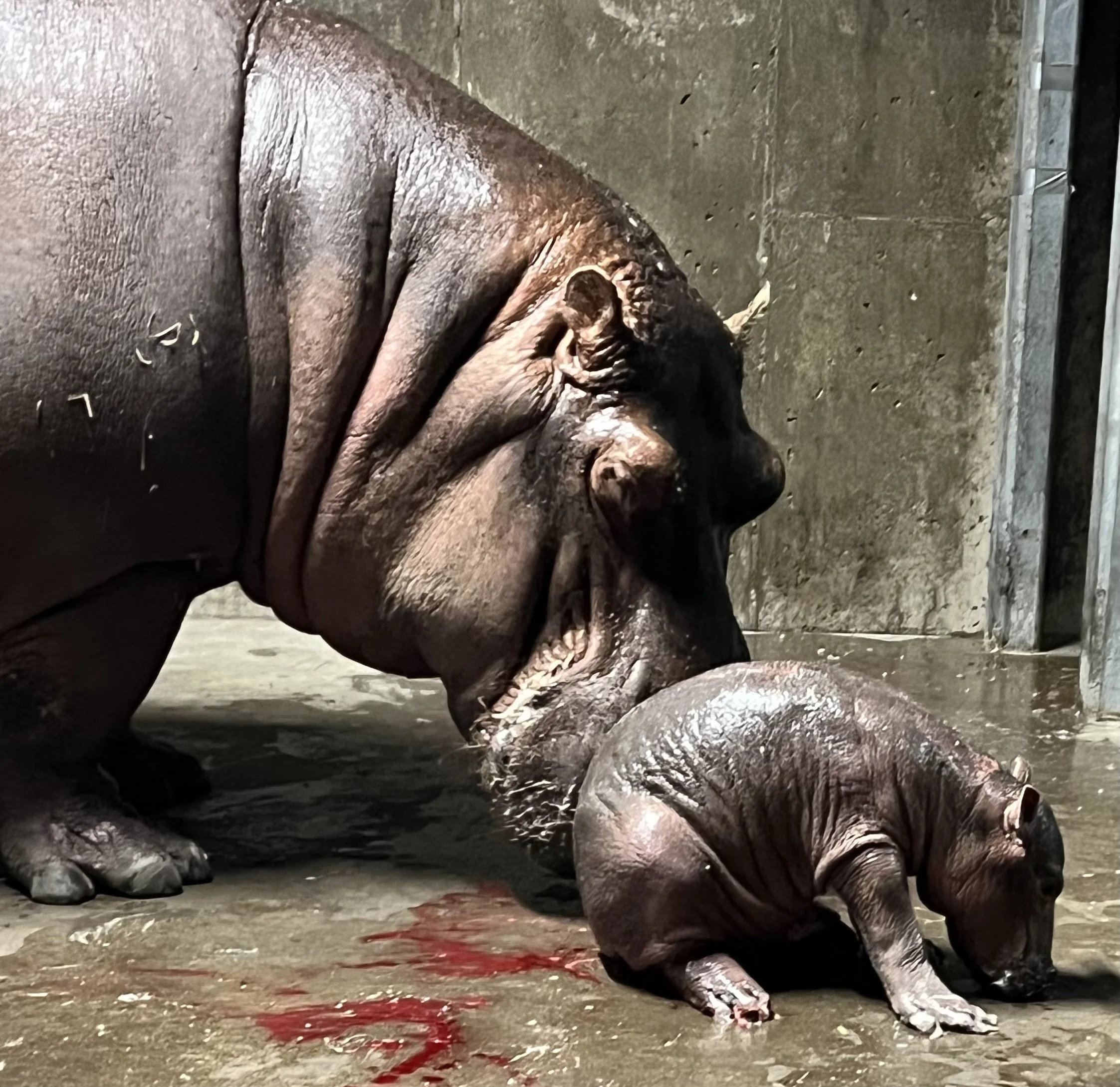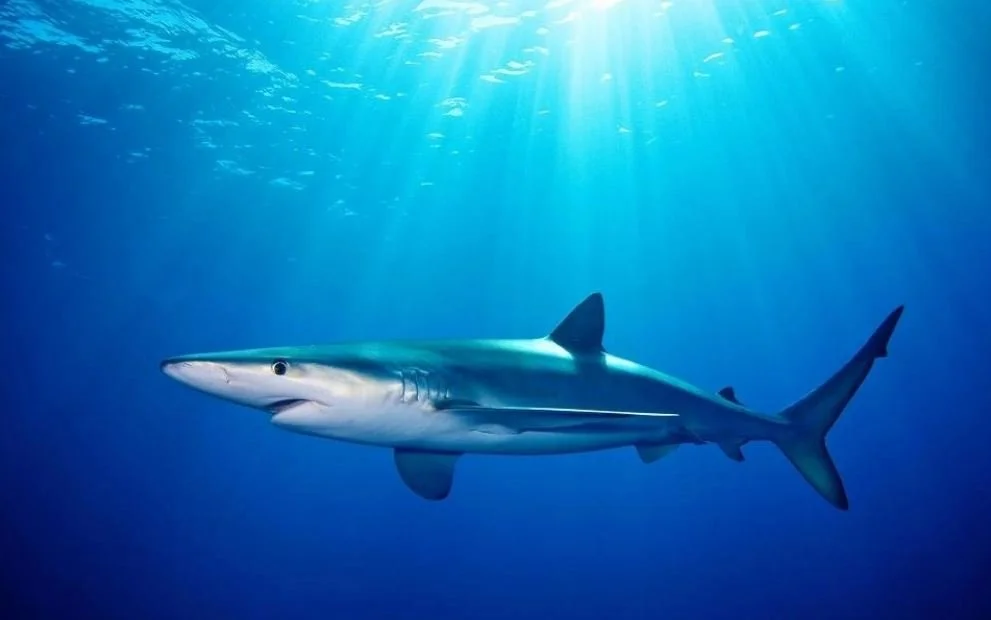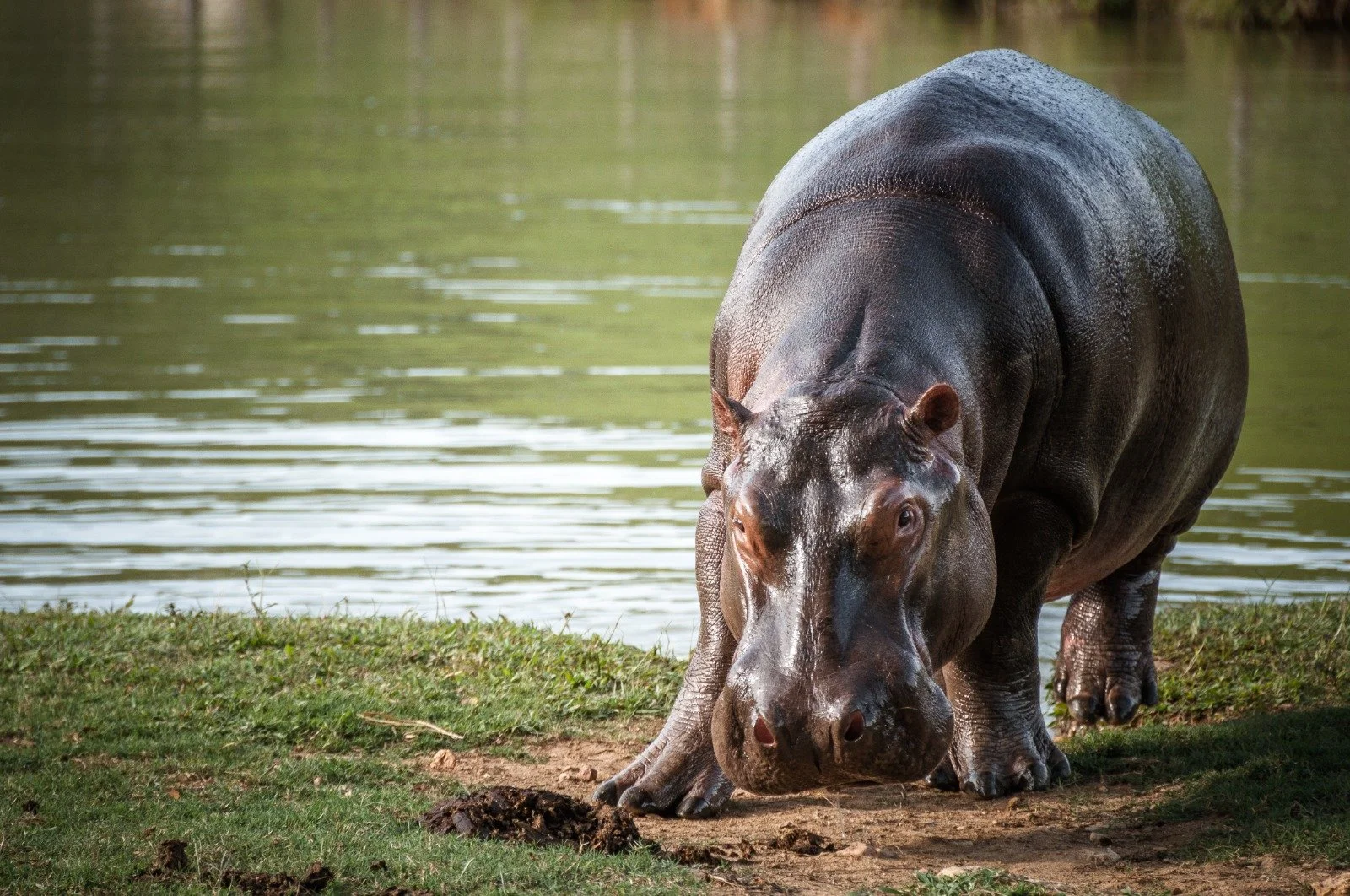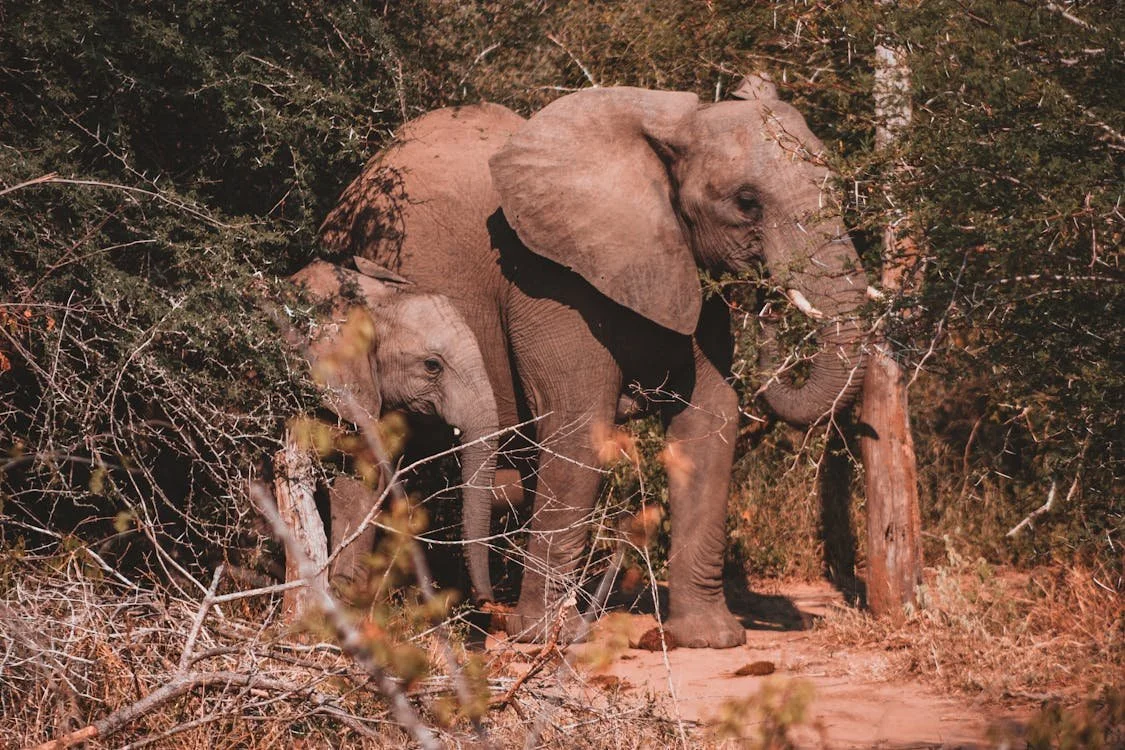Bibi and Her Baby Hippo Won't Be Eaten
Hippopotamus amphibius is a semi-aquatic creature and one of the world’s heaviest land animals, weighing up to 4,000 pounds.
There are between 115,000-130,000 stomping around 38 African countries, from Angola to Zimbabwe, but hippo populations in more than half of these countries are either in decline or unknown.
The Convention on International Trade in Endangered Species (CITES) has a proposal for the upcoming conference of the parties in November: let’s add the hippopotamus to the list of the world’s most endangered species.
Hippos have been listed as “vulnerable” since 2006, but are still incredibly if legally butchered for their meat, teeth and tusks. The CITES proposal, if it passes, would curtail much of the trade.
The beasts are particularly vulnerable because they require a habitat that is both particular and large. They need to have fresh water with areas shallow enough for them to stand while completely submerged, and large enough to accommodate their territorial nature.
Hippos are slow and infrequent breeders or as CITES puts it, “particularly vulnerable to overexploitation due to their very low reproductive output.” A fecund hippo may produce one offspring every other year, following an 8-month gestation period, and subsequent to a lactation period of 12 to 18 months.
The Cincinnati Zoo & Botanical Center was thus happy to announce the arrival of a bouncing baby hippo. The 23-year-old mom, Bibi, is reportedly doing well. “Bibi and the baby, yet to be named, will spend the next two weeks bonding behind the scenes,” said Christina Gorsuch, the zoo’s director of animal care.
Now it’s time to give hippos in the wild the same tender care.
Photo credit: Cincinnati Zoo & Botanical Garden







